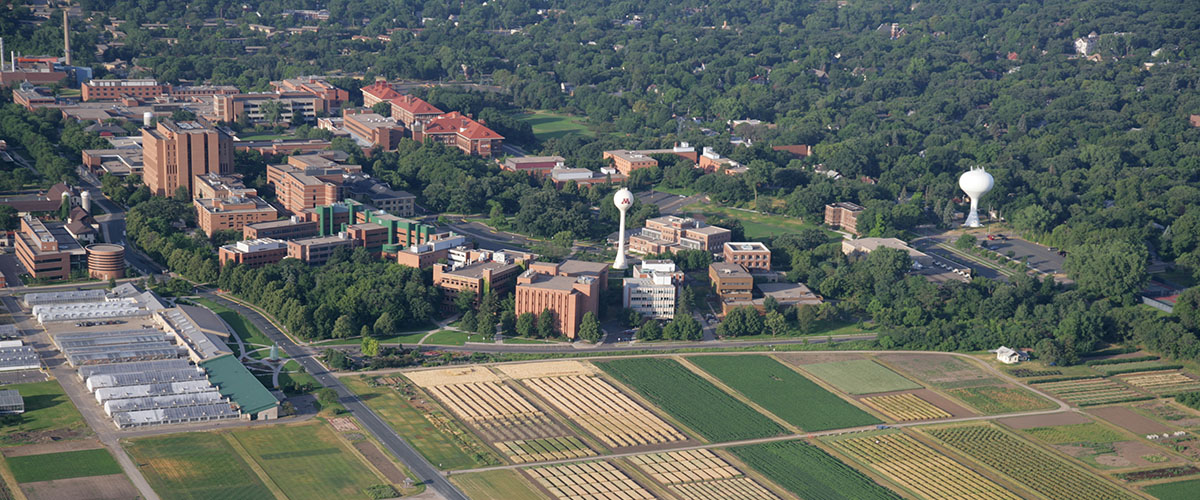
Investing in the St. Paul campus
A message from CFANS Dean Brian Buhr

Every day, the CFANS community works to advance Minnesota as a global leader in food, agriculture, and natural resources through extraordinary education, science-based solutions, and dynamic public engagement that nourishes people and enhances the environment. A great deal of this work occurs on the U of M's Twin Cities campus in St. Paul. CFANS Dean Brian Buhr recently shared this message about our vibrant St. Paul campus — a "living laboratory" that continues to grow.

As we welcome spring, I felt it timely to do a bit of myth-busting about our beautiful St. Paul campus. If you’re a CFANS fan, it’s likely you’ve bristled more than once at someone describing our locale as “quiet” or “boring” or “Moo U.” But if that’s what they’re saying, they clearly haven’t spent any time here.
Despite its understated reputation, the St. Paul campus is a hub of innovation and excellence in food, agricultural, and natural resource sciences — and is home to a vibrant community of students, faculty, and staff who are passionate about their work and dedicated to making a positive impact in their fields. From our classrooms and laboratories and greenhouses to the Bell Museum, we host world-class programs at the forefront of addressing critical global challenges such as food security, climate change, and sustainability.
Since 2014, more than $320 million has been invested in facility projects on the St. Paul campus. This includes everything from roof and window replacements to remodeled classrooms to HVAC, lighting, and security upgrades throughout our buildings, and much more. A $14.6 million infrastructure renewal of the Andrew Boss Laboratory of Meat Science is just one of many CFANS examples.
Today, we are aggressively advocating for Higher Education Asset Preservation and Replacement (HEAPR) funding from the 2024 Minnesota State Legislature for two major CFANS projects — $25 million for upgrades in our Food Science and Nutrition facilities, and $5 million for upgrades in the Poultry Teaching and Research Facility.
A number of other major projects are currently in the design phase, including the development of a new St. Paul Campus Center and Gortner Avenue reconstruction. Clearly, the commitment to improving and developing our St. Paul campus is waxing, not waning.
We have good reason to be enthusiastic about the future. Last year, we conducted a CFANS Insights survey of U.S. high school students — and 90 percent of them said it was important to pursue careers in which they can make a difference, including addressing hunger, sustainability, environmental conservation, and natural resources. Thirty-seven percent are particularly interested in careers in food, agriculture, natural resources, and the environment. These are our future CFANS students and the leaders of tomorrow. Our investment in this campus is an investment in them, and an investment in a better tomorrow.
The St. Paul campus is truly unique, a “living laboratory” that continues to grow. Thank you for your continued support of the life-changing work done by CFANS people in these buildings. I’d like to express special gratitude to Tracy Linbo, CFANS Alumni Society Board President, and Joel Reiman, Chair of the St. Paul Greek Alliance, for their energy and tenacity in championing the St. Paul campus with their stakeholders. Their passion is contagious and makes me proud to advocate alongside them. Thank you.





